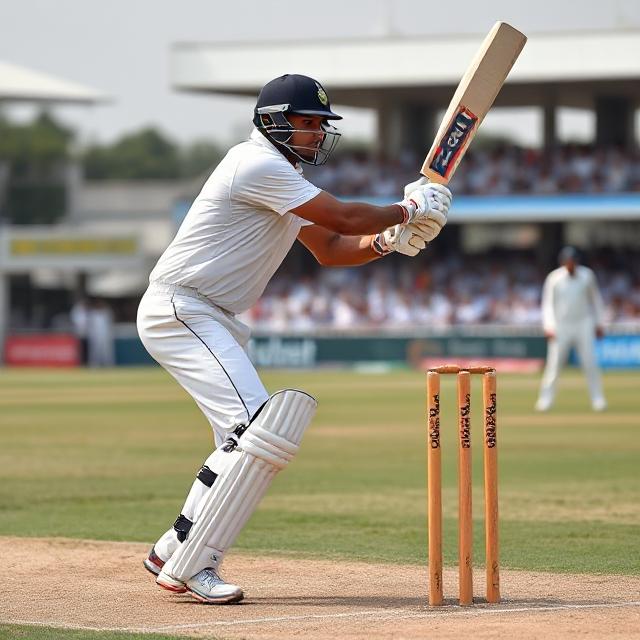The Evolution of Indian Cricket Leadership: From MS Dhoni’s Captaincy Revolution to Gautam Gambhir’s Coaching Philosophy
Introduction: The Changing Face of Indian Cricket Leadership
Indian cricket has witnessed one of the most fascinating leadership transitions in modern sports history. The journey from MS Dhoni’s revolutionary captaincy to Gautam Gambhir’s innovative coaching philosophy represents a paradigm shift in how Team India approaches player selection, team building, and strategic planning. This evolution showcases two contrasting yet equally effective leadership styles that have shaped the destiny of Indian cricket across different eras.
The transformation from Dhoni’s intuitive, risk-taking captaincy to Gambhir’s analytical, youth-focused coaching methodology highlights the dynamic nature of cricket leadership. Both leaders, despite their different approaches, share a common thread of making bold decisions that initially faced criticism but eventually proved instrumental in India’s success on the global stage.
MS Dhoni Captain: The Architect of Modern Indian Cricket
The Revolutionary Leadership Style
When MS Dhoni captain assumed leadership of the Indian cricket team, he inherited a squad filled with established stars and seasoned campaigners. However, his leadership philosophy centered around creating a balanced team composition that prioritized performance over reputation. This approach led to some of the most controversial yet successful decisions in Indian cricket history.
Dhoni’s captaincy was characterized by his ability to identify the right personnel for specific situations and his willingness to make tough calls when necessary. His decision-making process often defied conventional wisdom, but the results spoke volumes about his strategic acumen and understanding of the game’s evolving dynamics.
The Bold Decision to Drop Established Stars
One of the most defining aspects of MS Dhoni captain’s tenure was his courage to drop established players when their form or fitness didn’t align with team requirements. The decisions to sideline Virender Sehwag, Gautam Gambhir, and Harbhajan Singh were met with significant criticism from fans and cricket pundits alike, yet these moves proved crucial in India’s long-term success.
Virender Sehwag’s Exclusion: A Strategic Masterstroke
Virender Sehwag, the swashbuckling opener who revolutionized batting in the early 2000s, found himself out of favor during Dhoni’s captaincy reign. Despite Sehwag’s incredible record and match-winning capabilities, Dhoni recognized that the opener’s declining form and fitness issues could potentially hamper the team’s progress in crucial tournaments.
The decision to drop Sehwag wasn’t taken lightly. Dhoni understood that Sehwag’s aggressive batting style, while entertaining and often effective, had become predictable for opposition bowlers. The changing dynamics of international cricket demanded more consistent and adaptable opening partnerships, leading to this difficult but necessary decision.
Gautam Gambhir’s Transition: From Player to Future Coach
Perhaps the most ironic aspect of Dhoni’s leadership decisions was the gradual phasing out of Gautam Gambhir from the playing XI. Gambhir, who would later become the head coach and implement his own selection philosophy, experienced firsthand the challenges of being dropped despite significant contributions to Indian cricket.
Dhoni’s decision to move away from Gambhir was based on tactical considerations and the need for more dynamic fielding options in limited-overs cricket. This experience would later influence Gambhir’s coaching philosophy, giving him unique insights into player psychology and the importance of clear communication during selection decisions.
Harbhajan Singh’s Decline: The End of an Era
Harbhajan Singh, the off-spinner who had been instrumental in India’s overseas victories, found his place in the team diminishing under Dhoni’s captaincy. The rise of Ravichandran Ashwin and the team’s shift towards more attacking spin options meant that Harbhajan’s defensive bowling style no longer fitted the aggressive game plan that Dhoni envisioned.
This decision highlighted Dhoni’s forward-thinking approach and his ability to identify emerging talents who could better serve the team’s long-term objectives.
Dhoni’s Faith in the Next Generation
While MS Dhoni captain made tough decisions about established players, his greatest strength lay in identifying and nurturing young talent. His unwavering support for players like Rohit Sharma, Virat Kohli, and Ravichandran Ashwin transformed these individuals into world-class cricketers who would eventually become the backbone of Indian cricket.
Rohit Sharma: From Struggling Middle-Order Batsman to Opening Sensation
Dhoni’s decision to persist with Rohit Sharma despite early struggles proved to be one of his most successful gambles. When many questioned Rohit’s place in the team due to inconsistent performances, Dhoni recognized the batsman’s immense potential and provided him with the confidence and opportunities needed to flourish.
The transformation of Rohit from a struggling middle-order batsman to one of the world’s most successful limited-overs openers stands as a testament to Dhoni’s player management skills. This investment in Rohit’s development paid dividends as he went on to become India’s leading run-scorer in limited-overs cricket and eventually the captain of the national team.
Virat Kohli: Nurturing the Future King
Dhoni’s role in Virat Kohli’s development cannot be overstated. While Kohli possessed natural talent and determination, it was Dhoni’s guidance and strategic positioning that allowed the Delhi batsman to evolve into one of cricket’s greatest modern players.
Under Dhoni’s captaincy, Kohli learned the nuances of building innings, adapting to different match situations, and handling pressure in crucial moments. The mentor-student relationship between Dhoni and Kohli became one of cricket’s most successful partnerships, with Kohli eventually taking over the captaincy mantle with Dhoni’s blessings.
Ravichandran Ashwin: The Spin Revolution
Dhoni’s identification and development of Ravichandran Ashwin represented a shift in India’s bowling philosophy. While traditional Indian spinners focused primarily on containing runs, Ashwin brought a more aggressive, wicket-taking approach that aligned perfectly with Dhoni’s attacking mindset.
The captain’s faith in Ashwin’s abilities, despite initial criticism about his effectiveness in overseas conditions, proved instrumental in India’s bowling evolution. Ashwin’s development under Dhoni’s leadership established him as one of the premier spinners in world cricket.
The Transition Period: Leadership Handover Dynamics
The transition from MS Dhoni captain to the next generation of leaders marked a crucial phase in Indian cricket. Dhoni’s gradual withdrawal from different formats allowed for a smooth leadership transition, with players he had mentored taking over key responsibilities.
This period demonstrated the effectiveness of Dhoni’s long-term planning and his ability to create a sustainable leadership structure. The seamless handover of captaincy duties across formats showcased the depth of leadership talent that Dhoni had cultivated during his tenure.
Gautam Gambhir Coach: A New Era of Strategic Innovation
The Philosophy of Youth Development
When Gautam Gambhir coach assumed his role with the Indian cricket team, he brought a fresh perspective shaped by his playing experience and modern coaching methodologies. His approach differed significantly from traditional Indian cricket selection patterns, emphasizing youth development and performance-based selection criteria.
Gambhir’s coaching philosophy centers around creating opportunities for emerging players while maintaining competitive standards. His willingness to make bold selection decisions, similar to what he experienced as a player under different captains, demonstrates his understanding of the cyclical nature of team development.
Revolutionary Selection Decisions
Gautam Gambhir coach’s most significant impact has been his approach to team selection, which mirrors the boldness that characterized successful Indian cricket leadership. His decisions to move away from established players like Rohit Sharma, Virat Kohli, and Ravichandran Ashwin represent a strategic shift towards long-term team building.
The Rohit Sharma Transition
The decision to reduce Rohit Sharma’s role in certain formats under Gambhir’s coaching represents a significant departure from recent selection trends. This move acknowledges the need for succession planning and provides opportunities for the next generation of players to establish themselves at the international level.
Gambhir’s approach to managing Rohit’s transition demonstrates his understanding of the delicate balance between respecting past contributions and preparing for future challenges. This strategic thinking reflects the same forward-looking approach that made Dhoni such a successful captain.
Virat Kohli’s Evolving Role
The handling of Virat Kohli’s position under Gambhir’s coaching showcases a nuanced understanding of player management and team dynamics. Rather than completely excluding Kohli, Gambhir’s approach focuses on optimizing his contributions while creating space for emerging talents.
This strategy recognizes Kohli’s continued value to Indian cricket while acknowledging the importance of developing alternative options across different playing positions and match situations.
Ravichandran Ashwin’s Strategic Positioning
Gambhir’s decisions regarding Ravichandran Ashwin reflect a comprehensive evaluation of India’s bowling resources and future requirements. The coach’s approach to managing Ashwin’s role demonstrates his commitment to building a diverse and adaptable bowling attack.
Backing Emerging Talents
Gautam Gambhir coach’s most notable contributions lie in his identification and development of young cricketers who represent India’s future. His decisions to back players like Shubman Gill and bring back Washington Sundar showcase his commitment to youth development and strategic squad building.
Shubman Gill: The Future of Indian Batting
Gambhir’s unwavering support for Shubman Gill represents a significant investment in India’s batting future. Despite occasional inconsistencies in Gill’s performances, Gambhir’s backing demonstrates his belief in the young batsman’s potential and long-term value to the team.
This approach mirrors the patience that Dhoni showed with players like Rohit Sharma and Virat Kohli during their development phases. Gambhir understands that building world-class cricketers requires sustained support and strategic positioning within the team structure.
The investment in Gill’s development reflects Gambhir’s vision for Indian cricket’s future, where young players are given extended opportunities to establish themselves without the constant pressure of immediate results.
Washington Sundar: The All-Round Revolution
Gambhir’s decision to bring Washington Sundar back into the fold represents his appreciation for versatile cricketers who can contribute across multiple disciplines. Sundar’s ability to bowl economically, bat effectively in the lower order, and provide excellent fielding makes him an ideal fit for modern cricket’s demands.
This selection philosophy demonstrates Gambhir’s understanding of contemporary cricket’s requirements, where teams need players who can adapt to various match situations and contribute in multiple ways. Sundar’s inclusion reflects a strategic approach to team balance and tactical flexibility.
Comparative Leadership Analysis: Dhoni vs Gambhir Approaches
Decision-Making Philosophies
The leadership styles of MS Dhoni captain and Gautam Gambhir coach reveal fascinating contrasts in their approach to team management and player development. While both leaders share a willingness to make tough decisions, their methodologies and timing differ significantly.
Dhoni’s decision-making was often influenced by his on-field experience and intuitive understanding of match situations. His choices were typically based on immediate tactical requirements and his assessment of player psychology under pressure.
In contrast, Gambhir’s coaching decisions appear more structured and data-driven, reflecting modern coaching methodologies and long-term strategic planning. His approach incorporates advanced analytics and comprehensive performance evaluation systems.
Player Development Strategies
Both leaders have demonstrated exceptional ability to identify and nurture talent, though their methods differ considerably. Dhoni’s approach was more hands-on and mentor-driven, while Gambhir’s coaching philosophy emphasizes systematic development programs and structured progression pathways.
The success of players developed under both leadership styles validates the effectiveness of different approaches to talent cultivation in modern cricket.
Risk Management and Innovation
MS Dhoni captain was renowned for his calculated risk-taking and innovative tactical decisions during matches. His leadership style embraced uncertainty and leveraged unconventional strategies to gain competitive advantages.
Gambhir’s coaching approach reflects a more systematic risk assessment methodology, where decisions are based on comprehensive analysis and long-term strategic considerations rather than purely instinctive responses.
Impact on Indian Cricket’s Global Standing
Dhoni Era Achievements
The MS Dhoni captain era established India as a dominant force in world cricket across all formats. His leadership delivered unprecedented success, including World Cup victories, Champions Trophy triumph, and consistent top rankings in international cricket.
Dhoni’s ability to build winning teams from diverse talent pools demonstrated the effectiveness of his selection philosophy and player management approach. The players he developed continue to form the core of Indian cricket’s success story.
Gambhir’s Emerging Legacy
While Gautam Gambhir coach’s tenure is still in its early stages, initial indicators suggest his approach could significantly impact India’s future cricket trajectory. His emphasis on youth development and strategic team building positions India well for long-term success.
The early results of Gambhir’s coaching decisions indicate a positive trend in team performance and player development, suggesting that his philosophy aligns well with contemporary cricket’s demands.
Strategic Selection Philosophy: Building for the Future
Balancing Experience and Youth
Both MS Dhoni captain and Gautam Gambhir coach have faced the challenge of balancing experienced players with emerging talents. Their approaches to this fundamental team-building dilemma reveal different priorities and strategic visions.
Dhoni’s strategy often involved gradually transitioning established players while simultaneously developing their replacements. This approach ensured continuity while building for the future.
Gambhir’s coaching philosophy appears more decisive in implementing generational changes, potentially accelerating the transition process to ensure younger players receive adequate development opportunities.
Performance-Based Selection Criteria
The selection decisions made by both leaders demonstrate a commitment to performance-based team selection rather than reputation-driven choices. This approach has been crucial in maintaining India’s competitive edge in international cricket.
The willingness to drop underperforming stars and back promising youngsters reflects a professional approach to team management that prioritizes collective success over individual preferences.
Technical and Tactical Evolution
Bowling Strategy Transformation
The bowling strategies employed during the MS Dhoni captain era and under Gautam Gambhir coach’s guidance reflect the evolution of Indian cricket’s tactical approach. Dhoni’s preference for attacking spinners like Ashwin over defensive options like Harbhajan Singh demonstrated his progressive thinking.
Gambhir’s continued emphasis on versatile bowlers like Washington Sundar suggests a continuation of this tactical evolution, with added focus on players who can contribute across multiple disciplines.
Batting Order Innovations
Both leaders have shown flexibility in batting order arrangements and player positioning. Dhoni’s experimentation with batting orders and his ability to adapt strategies based on match situations became hallmarks of his captaincy.
Gambhir’s coaching approach appears to emphasize batting depth and positional flexibility, as evidenced by his support for all-rounders and versatile batting options.
Psychological Aspects of Leadership Transitions
Player Psychology and Confidence Building
The management of player psychology during leadership transitions represents one of the most challenging aspects of cricket administration. MS Dhoni captain’s ability to maintain team morale while making difficult selection decisions contributed significantly to his success as a leader.
Similarly, Gautam Gambhir coach’s approach to communicating selection decisions and maintaining squad harmony demonstrates his understanding of the psychological challenges faced by professional cricketers.
Dealing with Criticism and Media Pressure
Both leaders have had to navigate intense media scrutiny and public criticism regarding their selection decisions. Their ability to remain focused on long-term objectives while managing short-term pressure reflects their strength of character and commitment to their respective philosophies.
The resilience shown by both Dhoni and Gambhir in defending their decisions, even when faced with significant opposition, highlights the conviction required for effective cricket leadership.
Long-term Impact on Player Careers
Success Stories and Career Transformations
The impact of leadership decisions on individual player careers provides valuable insights into the effectiveness of different management approaches. Players who flourished under Dhoni’s captaincy, such as Rohit Sharma and Virat Kohli, credit his support and guidance for their career transformations.
Similarly, players benefiting from Gambhir’s coaching philosophy, including Shubman Gill and Washington Sundar, represent the potential success of his youth-focused approach.
Learning from Setbacks
The careers of players who faced setbacks during these leadership transitions also provide important lessons about resilience and adaptation in professional cricket. The experiences of players like Sehwag, Gambhir himself, and Harbhajan Singh demonstrate that cricket careers are subject to various factors beyond individual performance.
Modern Cricket’s Demands and Leadership Adaptation
Format-Specific Strategies
The evolution from MS Dhoni captain’s era to Gautam Gambhir coach’s tenure reflects cricket’s increasing specialization across different formats. Modern cricket demands leaders who can adapt their strategies and selection criteria based on format-specific requirements.
Dhoni’s success across all formats demonstrated the possibility of unified leadership approaches, while Gambhir’s coaching philosophy appears more tailored to specific format requirements and player specializations.
Technology and Analytics Integration
The integration of technology and analytics in cricket selection and strategy represents another significant evolution in Indian cricket leadership. While Dhoni relied primarily on experience and intuition, modern coaching approaches incorporate sophisticated data analysis and performance metrics.
Gambhir’s coaching methodology likely incorporates these technological advances, representing a natural evolution in cricket leadership approaches.
International Cricket Context and Competitive Landscape
Global Cricket Trends
The leadership decisions made by MS Dhoni captain and Gautam Gambhir coach must be viewed within the context of global cricket trends and competitive pressures. International cricket’s increasing competitiveness demands constant innovation and adaptation in team selection and strategy.
Both leaders have demonstrated awareness of global cricket developments and have adapted their approaches accordingly to maintain India’s competitive advantage.
Learning from International Best Practices
The influence of international cricket best practices on Indian cricket leadership is evident in both Dhoni’s and Gambhir’s approaches. Their willingness to incorporate global innovations while maintaining Indian cricket’s unique characteristics reflects sophisticated leadership thinking.
Fan Reactions and Media Narrative
Public Perception and Support
The public reception of selection decisions made by MS Dhoni captain and Gautam Gambhir coach reveals the passionate engagement of Indian cricket fans with team composition and strategy. The initial criticism followed by eventual acceptance of many decisions demonstrates the importance of results in validating leadership choices.
The evolution of fan perspectives on controversial decisions provides insights into the relationship between cricket leadership and public opinion in India’s cricket-crazy environment.
Media Analysis and Expert Commentary
Cricket media coverage and expert analysis of leadership decisions contribute significantly to public understanding and acceptance of team selection policies. The media’s role in explaining and critiquing decisions made by both Dhoni and Gambhir highlights the importance of transparent communication in cricket leadership.
Future Implications and Legacy Building
Sustainable Team Development Models
The leadership approaches demonstrated by MS Dhoni captain and Gautam Gambhir coach provide valuable templates for future cricket leadership in India. Their different but effective methodologies offer multiple pathways for achieving success in international cricket.
The sustainability of their respective approaches will be tested over time, but early indicators suggest that both models have merit in different contexts and situations.
Influence on Coaching Education
The success of both leaders is likely to influence coaching education and leadership development programs in Indian cricket. Their experiences and methodologies provide case studies for aspiring coaches and cricket administrators.
Conclusion: The Continuing Evolution of Indian Cricket Leadership
The journey from MS Dhoni captain’s revolutionary leadership to Gautam Gambhir coach’s innovative approach represents the dynamic nature of cricket leadership in the modern era. Both leaders have demonstrated that successful cricket management requires courage, vision, and the ability to make difficult decisions in the face of criticism.
The transformation of Indian cricket under these two distinct leadership styles showcases the importance of adaptive management and the value of different approaches to team building. While Dhoni’s intuitive, experience-based leadership delivered unprecedented success, Gambhir’s analytical, youth-focused coaching philosophy promises to continue India’s evolution as a cricket powerhouse.
The players who have experienced both leadership styles – whether as beneficiaries or casualties of selection decisions – carry forward valuable lessons that continue to shape Indian cricket’s development. The cyclical nature of cricket careers, as demonstrated by the transitions between the Dhoni and Gambhir eras, reinforces the importance of maintaining professional standards and continuous adaptation.
As Indian cricket continues to evolve, the legacies of both MS Dhoni captain and Gautam Gambhir coach will serve as reference points for future leaders. Their contrasting yet complementary approaches provide a comprehensive framework for understanding the complexities of cricket leadership and the importance of strategic vision in achieving sustainable success.
The ongoing success of players developed under both leadership styles validates the effectiveness of their respective philosophies and suggests that Indian cricket’s future remains bright under evolved leadership approaches. The combination of Dhoni’s foundational work and Gambhir’s innovative strategies positions Indian cricket to continue its dominance on the global stage while developing the next generation of cricket superstars.
This leadership evolution story demonstrates that cricket success requires not just talented players but visionary leaders who can make tough decisions, nurture talent, and adapt to changing circumstances. The transition from Dhoni’s captaincy to Gambhir’s coaching represents a natural progression in Indian cricket’s journey toward sustained excellence and global leadership in the sport.







